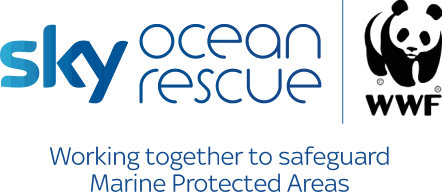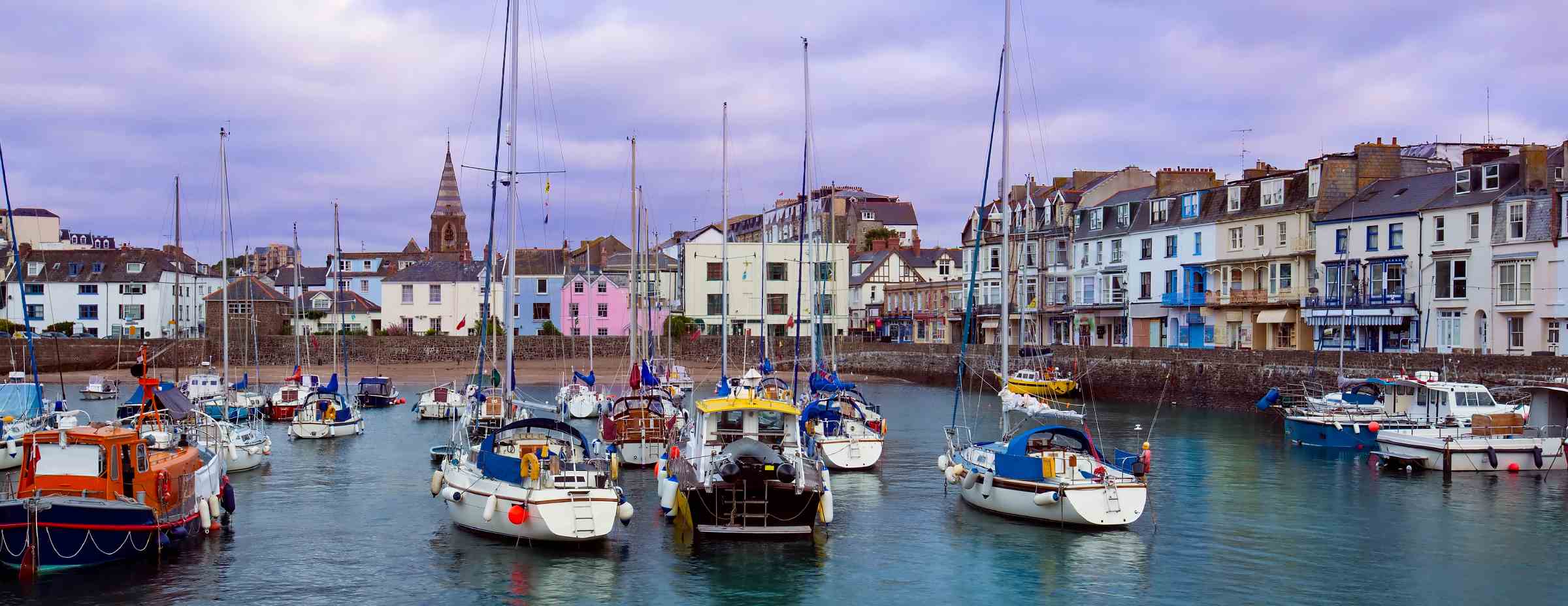
North Devon
The seas around North Devon are packed with wonderful marine life and habitats. These provide a range of benefits to people, including nursery grounds for young fish provided by intertidal reefs, and coastal protection by saltmarshes. Many businesses in the North Devon area depend on a healthy marine environment, including commercial fishing and tourism/recreation businesses.
This area was chosen by Defra as one of the ‘Marine Pioneers’, which means that this area is being used to trial new approaches set out in the government’s 25 year environment plan. WWF is working in partnership with a range of organisations as part of this, to develop new, ground-breaking approaches to environmental management and decision-making.
The North Devon Marine Pioneer involves a range of stakeholders through the North Devon Biosphere’s Marine Working Group, which has representatives from maritime industries, conservation, tourism, watersports and voluntary organisations.
WasteShark marine robot launched in Ilfracombe
We've launched an autonomous marine robot in north Devon to help clear Ilfracombe harbour of waste. The WasteShark® roams through distances of up to 5km of water, capturing plastics, microplastics, oils and other pollutants. It is the UK’s first marine robot designed specifically to eat waste and collect data. It is designed to be harmonious with the environment. As it navigates the water the WasteShark emits no carbon, produces no noise or light pollution, and poses no threat to wildlife. Find out more about the WasteShark.
The Compass
Read here our report of the compass pilot in North Devon.
Find out more about The Compass on our marine governance page.
If you're using a mobile device, we recommend turning your phone to landscape to view the interactive map below.
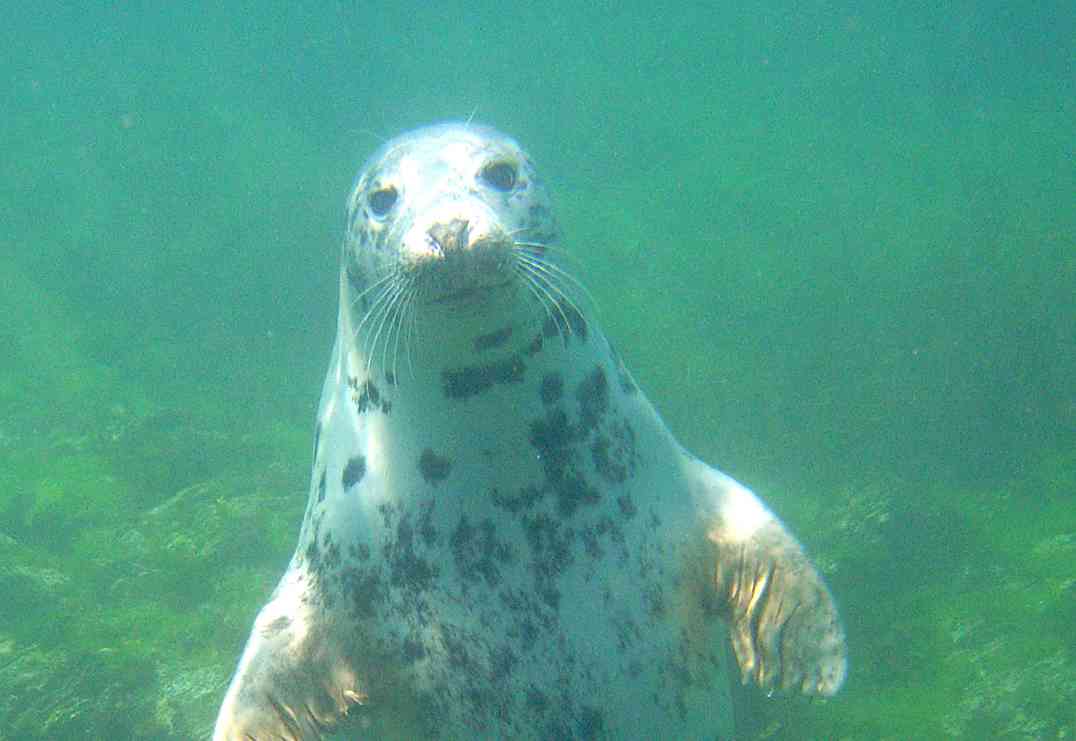
Keith Hiscock
This map is interactive. Click on the pink and blue circles for more information on MPA management, species, habitats and industry in the area. The blue information circles denote that this is a proposed MPA.
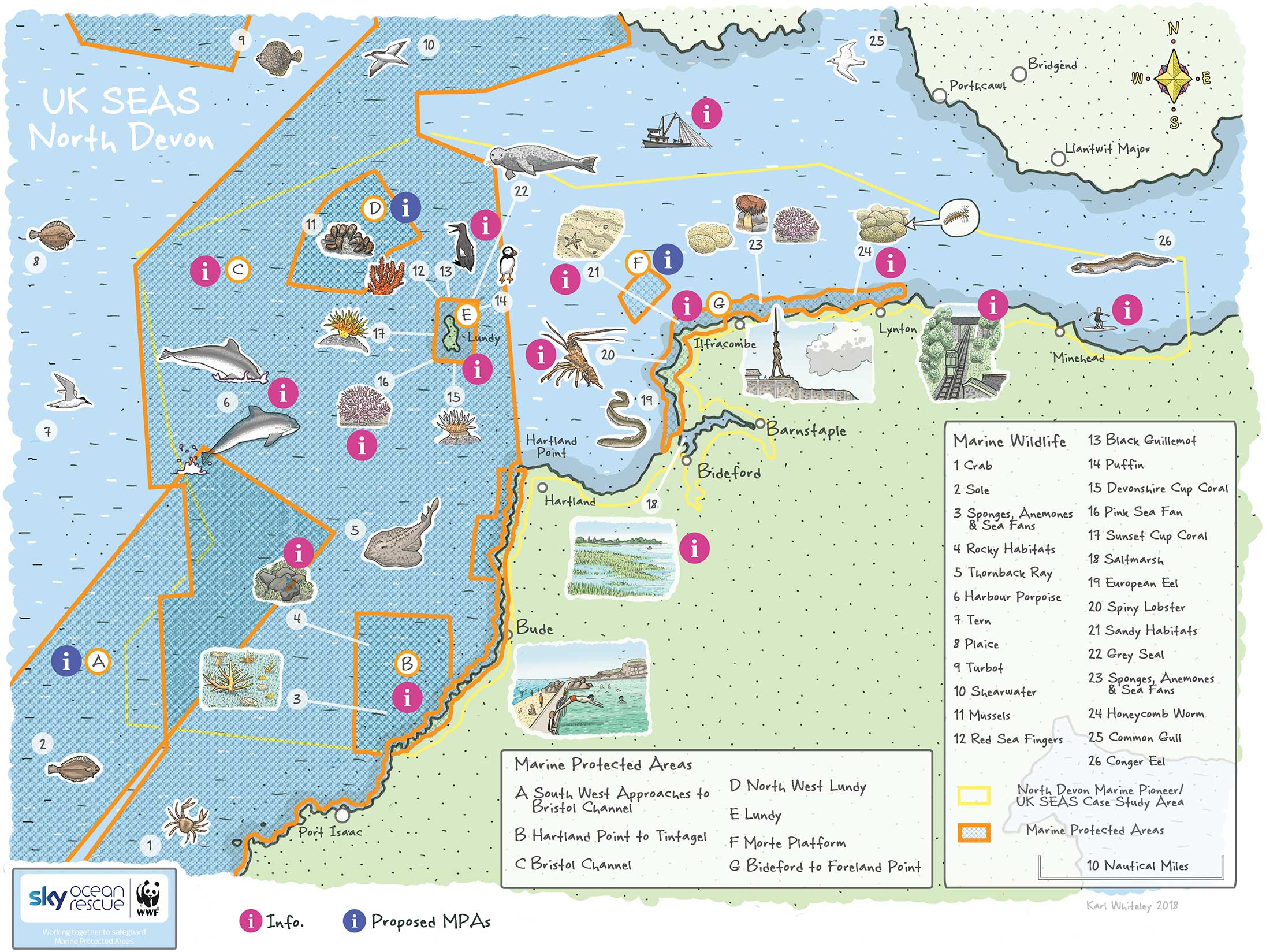
Rocky habitats
When you think of reefs, your mind immediately goes to tropical paradises or the Great Barrier Reef, but UK waters also have beautiful rocky reef communities, and are home to many important species like the spiny lobster, conger eel, grey seal, pink sea fan and sunset cup coral. Find out more in the short film above.
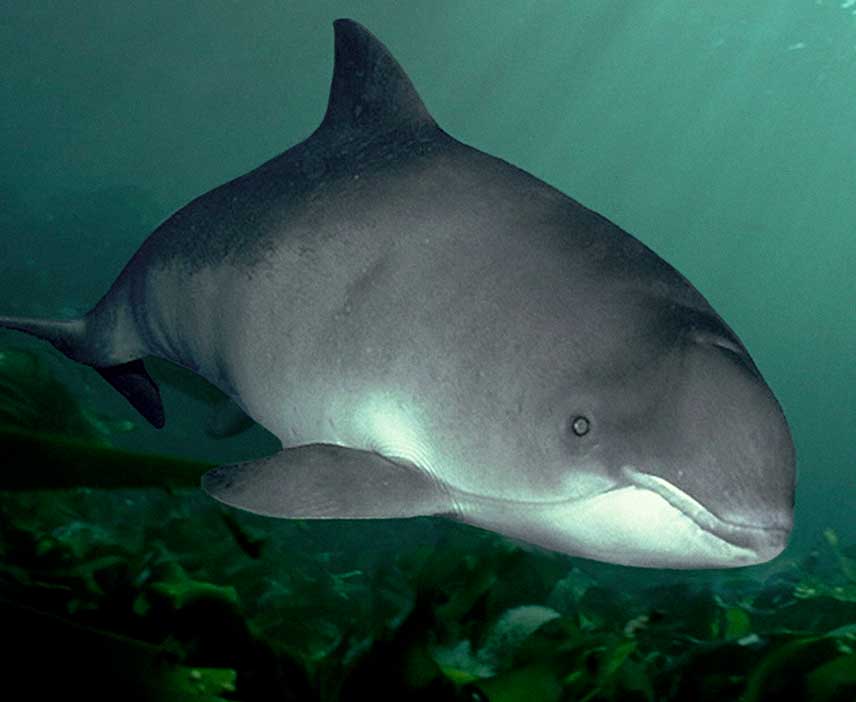
Credit: © naturepl.com / Florian Graner / WWF
Harbour porpoises
The harbour porpoise is the smallest cetacean we have in the UK and there are roughly 130,000 individuals of this shy and elusive animal in our waters. However it’s sadly thought that at least 1,200 harbour porpoises die every year in British waters through entanglement in fishing gear; and they’re also incredibly sensitive to underwater noise.
The partnership between Sky Ocean Rescue and WWF is addressing these key risks by trialling innovative new technologies and approaches. Harbour porpoises are protected in the Bristol Channel Approaches MPA.
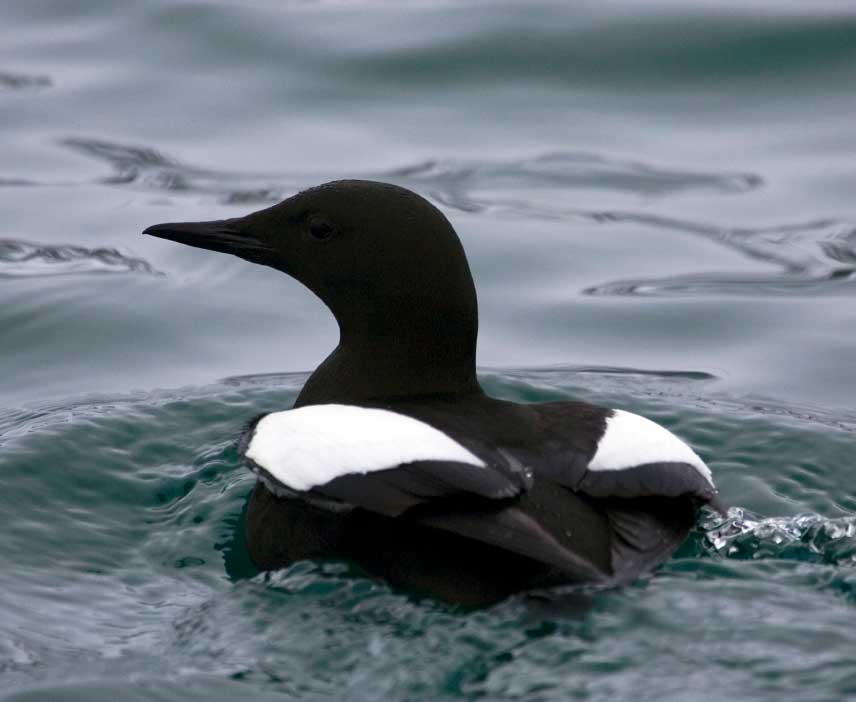
© WWF / Sindre Kinnerød
Guillemots
Guillemots spend their whole lives at sea except for when they breed in densely packed colonies on steep, rocky coastal cliffs. These colonies can be found dotted around the UK coastline between March and July. Guillemot populations could potentially be threatened by food shortages caused by over fishing. Guillemots are protected in the Bideford to Foreland Point MPA.
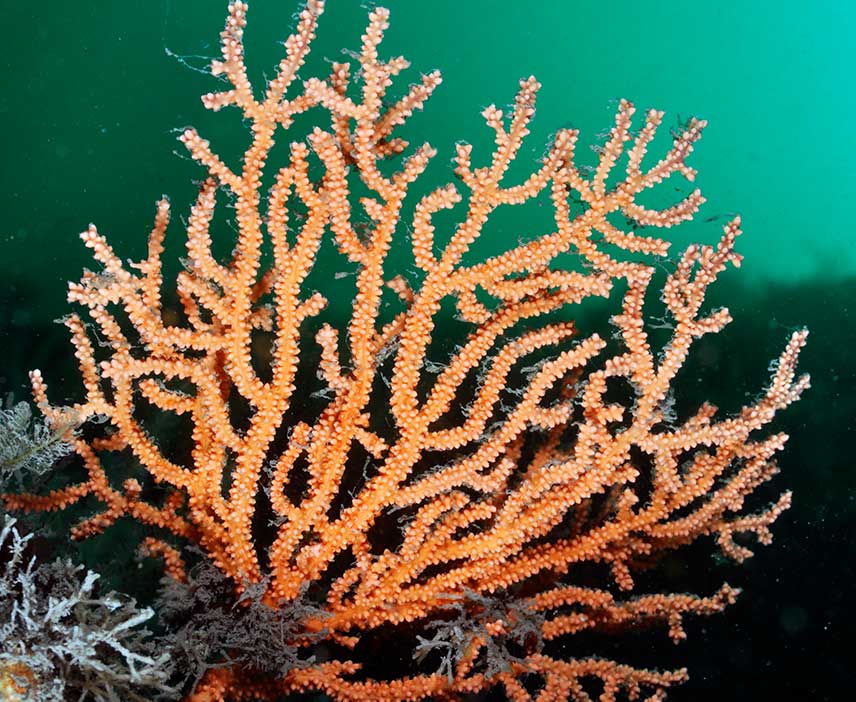
© naturepl.com / Linda Pitkin / WWF
Pink sea fan
Pink sea fans are hard colourful corals that provide homes to other species like sea slugs and anemones. They are nationally scarce and most likely to be found around the south west coast of England. They’re very vulnerable to seabed dredging, and since they grow at speeds of just one cm a year, it can take a very long time for them to recover. Pink sea fans are protected in the Bideford to Foreland Point, and Hartland Point to Tintagel MPAs.
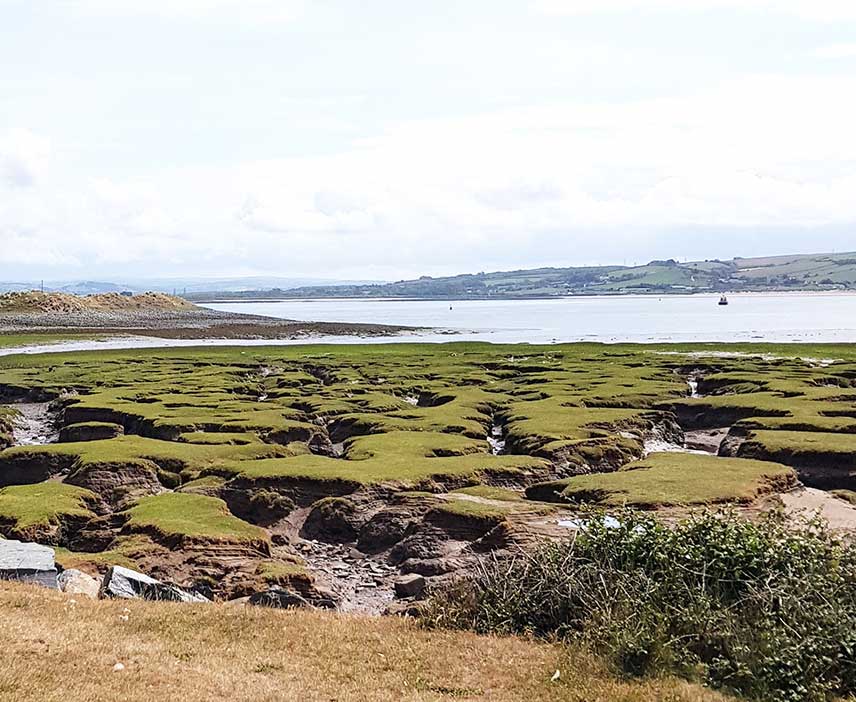
Saltmarsh
Saltmarshes are full of life and provide people and communities with a wealth of benefits, including climate regulation, coastal protection and nursery grounds for commercially important fish species. However saltmarshes are under threat from pressures like sea level rise and pollution from the land. They are critically important to a healthy marine ecosystem and economy, and need to be effectively protected.
Some saltmarsh area is protected in the Hartland Point to Tintagel MPA.
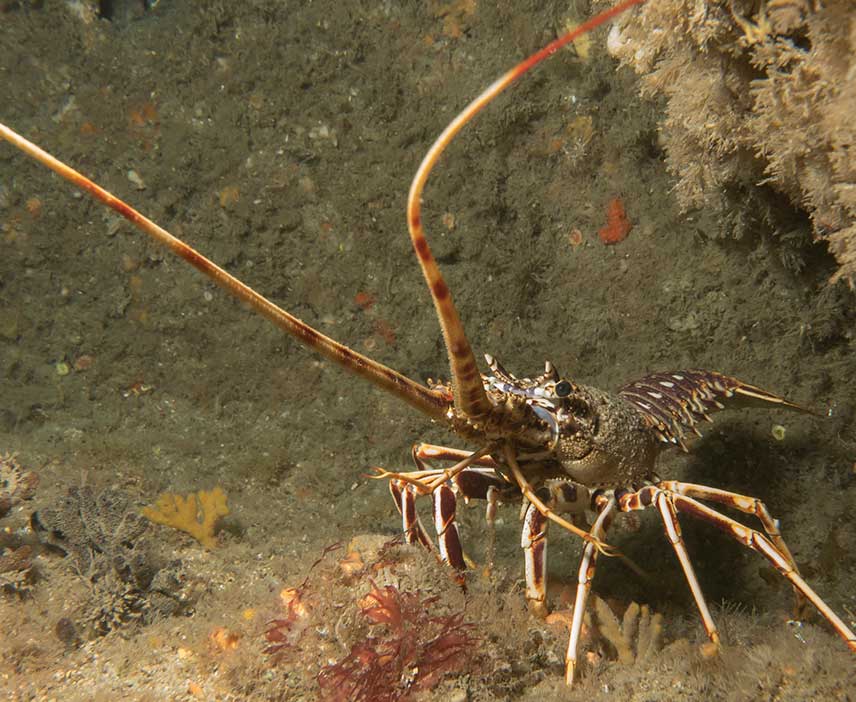
Spiny lobster
European spiny lobsters (also known as crayfish) are bright yellow or orange in colour and can grow up to 60cm long. They scavenge food from the sea bed and often live in rock crevices and small caves for protection.
With few natural predators, spiny lobsters are most likely to be affected by human activities like fishing practices. Spiny lobsters are protected in the Lundy Island and Bideford to Foreland Point MPAs
Sandy habitats
It might look like underwater sands and muds are devoid of life, but there’s lots going on below the surface. Subtidal sediments provide rich feeding grounds for many commercially important fish species, but some types of disturbance to the seabed (for example by fishing techniques that impact the bottom) can put these fragile ecosystems under threat. We need to ensure they are well managed.
Both Bideford to Foreland Point and Hartland Point to Tintagel MPAs are in place partly to protect this type of habitat.
Find out more in the short film above.
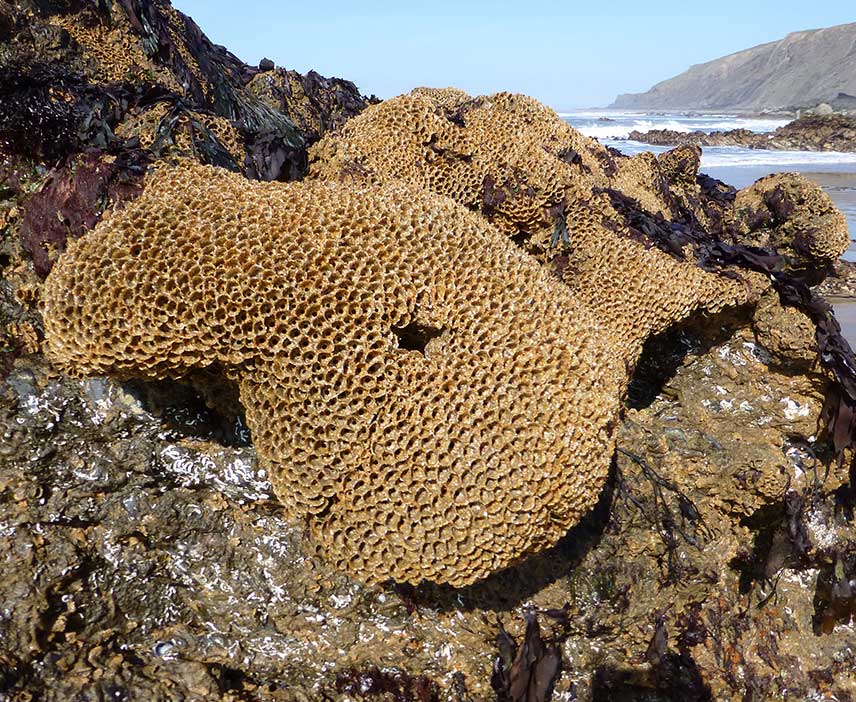
© Keith Hiscock
Honeycomb worm
Honeycomb worms use sand and shell fragments to build little tube homes en masse, forming reefs that look like honeycomb. These reefs are home to other marine wildlife like anemones, snails and crabs.
Honeycomb worms are protected in the Bideford to Foreland Point and Hartland Point to Tintagel MPAs.
South West Approaches to Bristol Channel MPA
Proposed
This fact sheet explains why the site is environmentally important, what features would be protected, and what activities could be affected by proposed management measures.
Hartland Point to Tintagel MPA
This fact sheet explains the management which applies to the Hartland Point to Tintagel MPA, what features are being protected and who is involved in management.
Bristol Channel MPA
This JNCC web page explains the management which applies to the Bristol Channel MPA, what features are being protected and who is involved in management.
North West of Lundy MPA
Proposed
This fact sheet explains why the site is environmentally important, what features would be protected, and what activities could be affected by proposed management measures.
Lundy Island MPA
Lundy Island is home to some of the UK’s most diverse and incredible wildlife, including species of conservation importance. It’s home to sea birds including puffins and manx shearwaters, as well as corals, lobsters, fish and seals.
The habitats and species around Lundy provide a wealth of important benefits to people. The island has been under different types of protection for the last 45 years, and in 2010 was the first Marine Conservation Zone to be set up around the UK.
Find out more in the short film above.
You can find more information about the management measures in place in the Lundy Island MPA, and what habitats and species are being protected on this Landmark Trust web page.
Morte Platform
Proposed
This fact sheet explains why the site is environmentally important, what features would be protected, and what activities could be affected by proposed management measures.
Bideford to Foreland Point MPA
This fact sheet explains the management which applies to the Bideford to Foreland Point MPA, what features are being protected and who is involved in management.
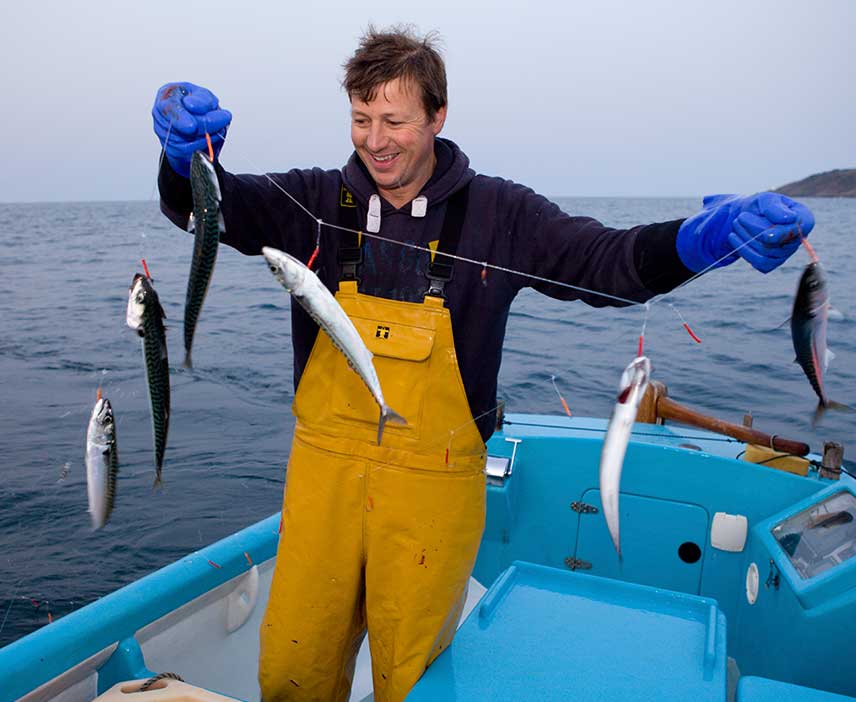
© naturepl.com / Toby Roxburgh / WWF
Fishing industry
Fishing is an important industry in the North Devon area, holding a key stake in the local economy and providing income for many members of the community.
In 2016, landings of fish and seafood into North Devon ports were valued at £1.5 million per year.
It is vitally important that the marine environment is protected, not only for nature but for important industries like fishing that depend on healthy seas.
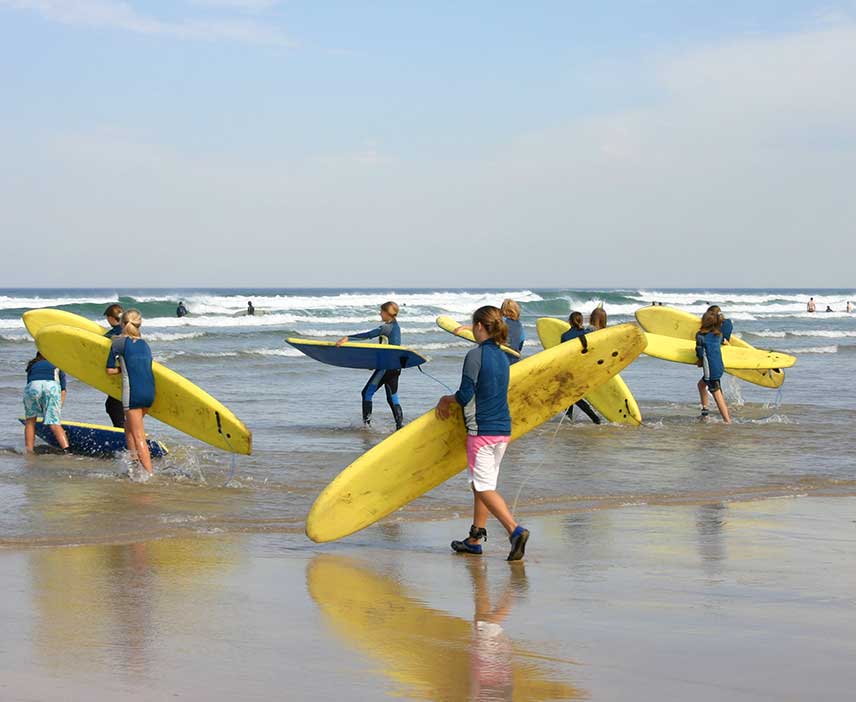
Surfing industry
Surfing generates a surprising amount of income for the area; in 2016 the North Devon surfing economy was valued at £52.1 million per year, associated with approximately 42,000 surfers.
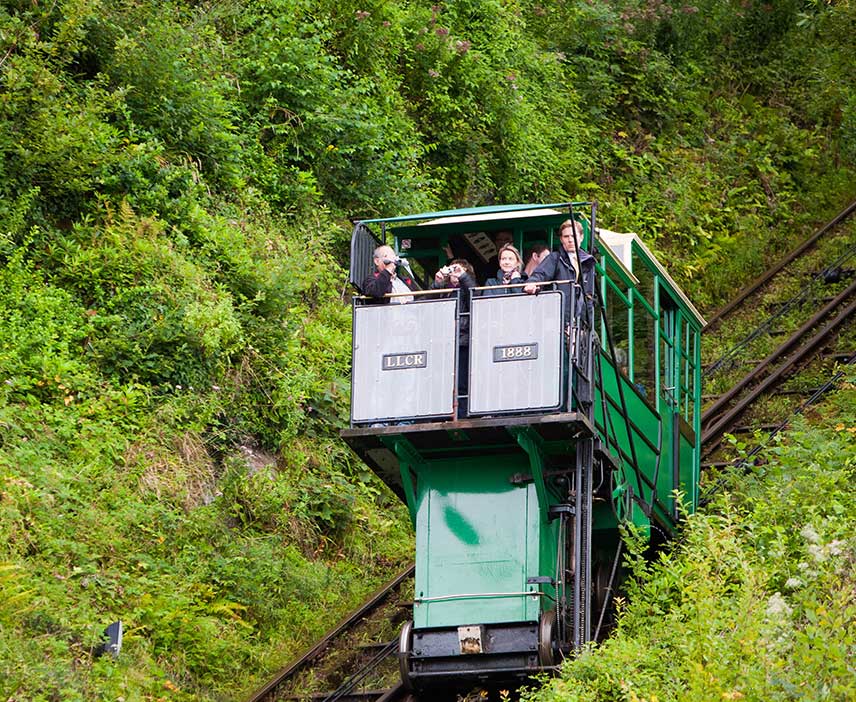
© Global Warming Images / WWF
Tourism industry
Tourism is a vital part of the local economy, with estimates of the value of the industry ranging between £250 and 450 million a year – a healthy marine environment is key to that success.
 Joint
Joint External
External UK SEAS
UK SEAS
 Organising
Organising Presenting
Presenting Workshop
Workshop Attending
Attending Of interest
Of interest
Reports
 North Devon Marine Protected Areas Cost Evaluation - Final Report
North Devon Marine Protected Areas Cost Evaluation - Final Report
Date: 21st December, 2020
Download PDF ![]()
 Blue Impact Fund - Strategic Business Case
Blue Impact Fund - Strategic Business Case
Date: 21st December, 2019
Download PDF ![]()
 Second Kenya Marine Knowledge Exchange workshop
Second Kenya Marine Knowledge Exchange workshop
Date: 29th August, 2019
Download PDF ![]()
 WasteShark collecting plastic and data
WasteShark collecting plastic and data
Date: 15th August, 2019
Download PDF ![]()
Upcoming Meetings & Workshops
We will keep you updated on future meetings for the North Devon project. This list will be updated when meetings are taking place.
Previous Meetings & Workshops
 North Devon Biosphere Reserve Partnership Meeting
North Devon Biosphere Reserve Partnership Meeting
Date: 15th November, 2018
Location: Torrington
Read more +
 Severn Estuary Forum 2018
Severn Estuary Forum 2018
Date: 9th October, 2018
Location: Newport, Wales
Read more +
 Lundy Management Forum
Lundy Management Forum
Date: 4th October, 2018
Location: Croyde, North Devon
Read more +
 Lundy MPA Advisory Group
Lundy MPA Advisory Group
Date: 3rd October, 2018
Location: Ilfracombe, North Devon
Read more +
